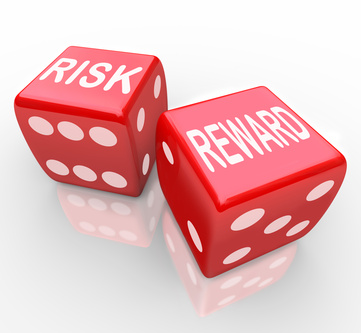One area where formal academic economics is very behind is modelling the gambler. There are definitely many interesting ideas out there about how to model a gambler, particularly as concerns his seeming taste for risk. However like most projects aimed at modelling irrational people, there is little consensus and even less data backing up one theory versus another. Rather than try to answer the question once and for all, it may be more useful to try and model the Player who chooses to play slot machines. We will see that even a little bit of formal thought helps us to tell a compelling story about the direction of the slot machine market.
I think it is important when looking at a slot machine to
realize that when a Player puts money in it, a whole lot of different outcomes
can occur, and here we are not just talking about monetary outcomes. As a consequence we should think about
modelling slot machine demand as a demand for many different goods at once, all
of which live inside the slot machine.
Above all we must recognize that Players will differ in their demands
for the sub-components of the slot machine, just as their taste in art or music
varies.
Some Players are mostly in it for the big win, and slot
machines offer some of the highest returns.
Other players may be more interested in a more casual experience
comprised of seeing a lot of different symbol combinations paying moderately well. Since slot machines have a lot of possible
combinations, understanding every Player’s experience can be difficult, but
understanding the big wins is not. They
happen rarely, and they pay in large ratios, sometimes over 1000x’s bet.
Thinking back to the Great Tightening, when Casinos across
the board reduced their Returns to Players, not all Players were affected
equally. Manufacturers are reluctant to
take the biggest prizes out of a game and often might leave the odds of bigger prizes relatively unchanged. Usually in
order to reduce for example a 90% RTP to an 85% RTP, smaller prizes will be
adjusted.
As we noted in the Great Tightening post, reducing the RTP
has at least a wealth effect in that it makes Players on average feel
poorer. However, that wealth effect may not have
been big enough to drive out players chasing big wins. That 5% difference in expected return, was
probably not coming from that 1 in a million payout that the big win chaser is
after. To think about it simply, that
1000x’s bet is still 1000x’s bet, and its odds haven’t changed much, if at all.
What that means is that as Casinos tighten up their slots,
they observe an increasing percentage of Players being the kind of Player
chasing big wins. They could intuit this by observing that games traditionally
considered volatile would still be doing well. This in turn causes the Casinos to request the
Manufacturers make more volatile games. And
when these games take a larger share of the floor, more Players who are not big
win chasers feel that their particular sub-demands are not being met. In fact Players are made to feel less wealthy by the increased
risk they have to take on for the same returns compared to the previous floor
composition, and again marginal Players are driven out of the market.
This is a vicious cycle, and unless you can make up for the lost Players with just the big win chasers, I don’t think it is optimal for any of the parties involved. The most important take away here is that thinking about Players simultaneously as rational agents in a risk-reward trade off and as having demands for sub-components of the full slot machine experience helps us understand shifts and trends in the market composition.
This is a vicious cycle, and unless you can make up for the lost Players with just the big win chasers, I don’t think it is optimal for any of the parties involved. The most important take away here is that thinking about Players simultaneously as rational agents in a risk-reward trade off and as having demands for sub-components of the full slot machine experience helps us understand shifts and trends in the market composition.

No comments:
Post a Comment